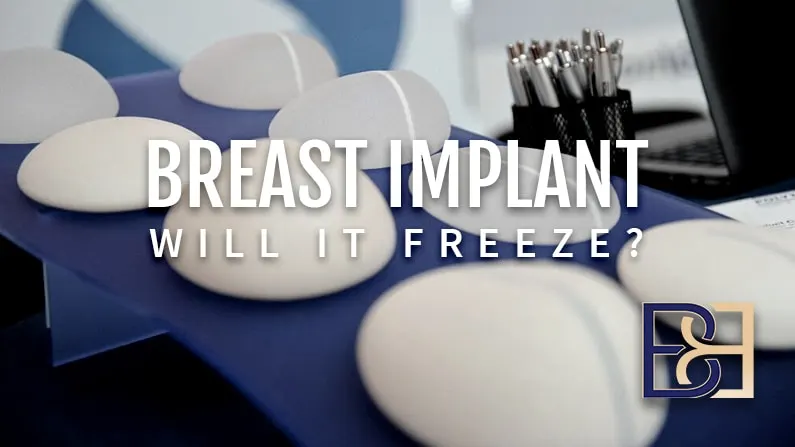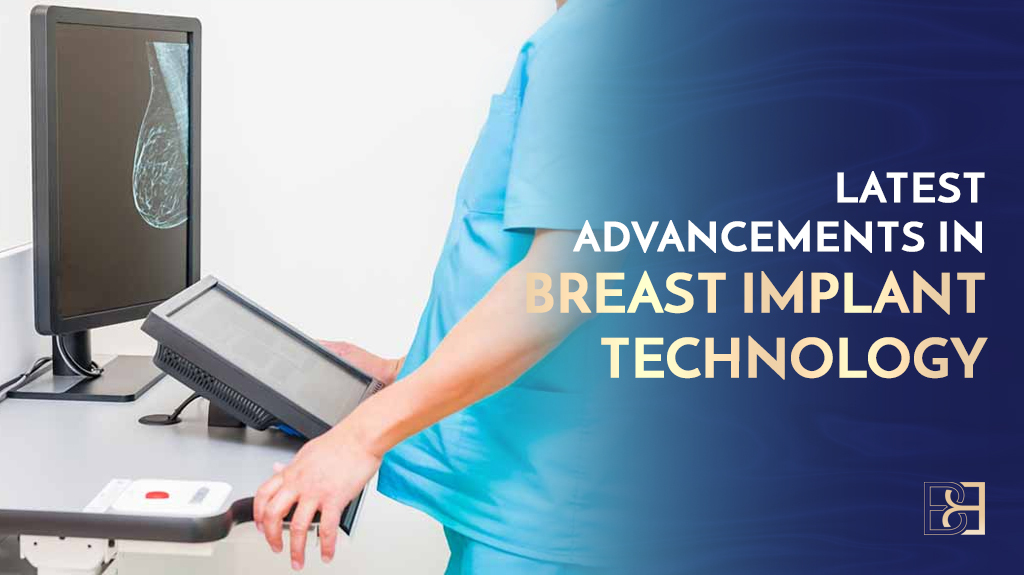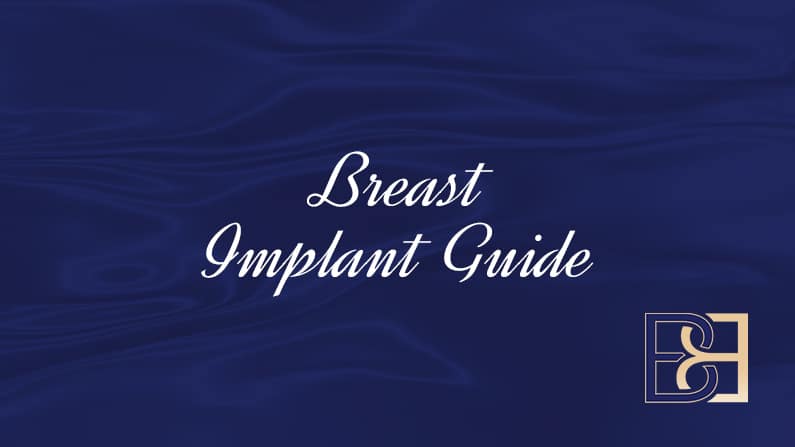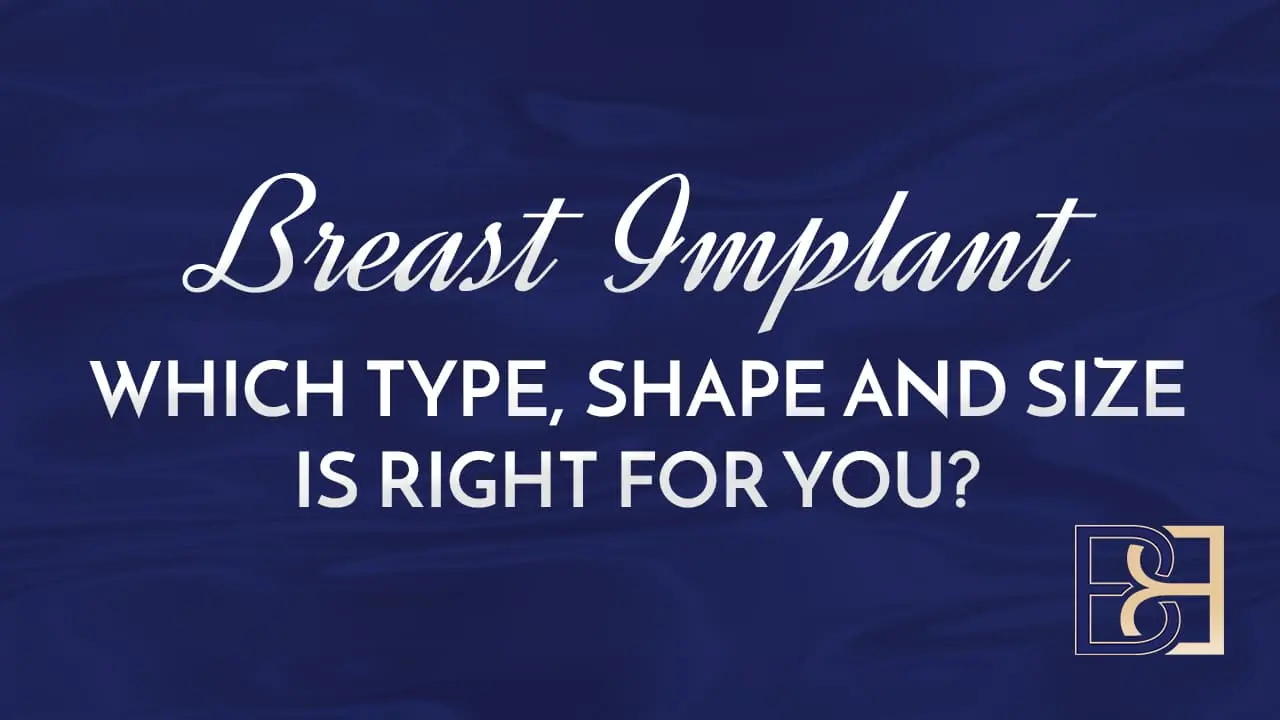- What is breast augmentation surgery?
- Reasons women get implants
- What breasts implants won’t do
- Things to consider before the surgery
- Myths about breast implants
- Breast implant shapes, texture and profile
- Choosing implant size
- Rice bag sizing trick
- 3D breast implant “virtual try on”
- Breast implant cost
- Preparing for surgery
- What to expect on surgery day
- Breast augmentation downtime and recovery
- And lots more.
Thinking about breast implants?
Breast augmentation is one of the most popular cosmetic procedures worldwide. Nearly 1.5 million breast augmentation surgeries were performed globally in 2015 — a 10 percent increase from the year before.
If you’re looking to get breast implants in the near or distant future, first off, congratulations! You’ll soon join the millions of patients who have undergone this life-changing surgery and are thrilled with their results.
Before even stepping foot into a surgeon’s office, you’ll likely feel both excited and anxious. Don’t worry, though. These feelings are ** normal. Before meeting with your cosmetic surgeon, you’ll likely be brimming with questions.
In order to answer many of those questions, Dr. Bernard Beldholm, FRACS has created this helpful guide to help you decide what breast implant size, shape, type and texture is suitable for your body. In addition, this article provides answers to many questions patients have about breast implants.
By the time you are done reading, we will provide you with nearly everything you ever wanted to know about selecting the right implants for you and what to expect after surgery.
What is breast augmentation surgery?
Breast augmentation surgery, medically referred to as augmentation mammoplasty, involves placing breast implants to increase the size of a patient’s breasts or ** breast volume that has been lost after weight loss or pregnancy.
Breast augmentation can:
- Enlarge breast size
- Correct uneven breasts
- Make breasts more proportionate in size to your body
- Be added to a breast lift to correct **
Download our guide: “How to Choose a Breast Implant”
Why do women get implants?
There are three main reasons women choose to get breast implants.
Increase breast size
Some women have naturally small breasts. Not everyone wants larger breasts, but this is a common reason women get breast surgery. The goal of breast enlargement is to have breasts that look proportionate with your body. If you feel your breasts are too small for your frame, breast implants can help.
Uneven or disproportionate breasts
It’s normal to have one breast slightly larger than the other. Some women notice a significant difference between the size of their breasts, however. If you have breasts that are dramatically different in size, breast implants can help. Implants can also make breasts more proportionate in size to the rest of your body.
Breast **
Patients with ** breasts often **. **breasts can be caused by pregnancy, aging, weight loss and having naturally large breasts.
Women with ** breasts usually need a breast lift and breast implants. Regardless of implant size and shape, a breast augmentation alone cannot correct major **. Implants can ** upper breast fullness, but only to a degree.
Consult with Dr. Beldholm if you are unsure if you need a breast lift. Together, you can decide the approach to achieve the breasts you want.
What breasts implants won’t do
Many patients assume that breast implants will correct drooping breasts. Unfortunately, that’s a huge myth. While breast implants can ** minor **, most patients will also need a lift.
Breast augmentation alone mainly corrects volume loss. However, a breast augmentation and lift can be performed in one surgery to reduce ** and ** lost volume.
Do I need a breast lift and implants?
There are a number of factors that determine if a patient needs just a breast lift, implants or both. During your consultation, your surgeon will let you know which procedure(s) will help you achieve your goals.
Breast lift with implants: Who benefits
As a general guide, if the breasts ** and are also too small, both a breast lift and augmentation are usually needed. Often a lift without implants leaves the upper part of the breast too flat still. Frequently, a lift is performed with a small implant to solve this problem.
Implants alone: Who benefits
Breast implants alone can correct a woman’s ** breasts if the drooping is mild, and the nipple still sits near the center of the breast and doesn’t point downward. As long as the patient is okay with increasing their breast size by at least one cup size, this method can work.
Breast lift alone: Who benefits
If the patient is already a C or D with decent volume in the upper breast, a patient may benefit from a lift alone. This procedure works well for women with moderate to severe drooping, and the nipple is at the bottom of the breasts, pointing down.
Candidates for breast augmentation surgery
Unfortunately, not everyone will qualify for surgery. It’s important to understand that breast augmentation is a serious procedure with long-lasting results. Because of this, you should make sure you’re doing this for you, rather than to please someone else. You may be a candidate for breast augmentation surgery if:
You are physically **
You’re not a great candidate for breast augmentation if you have a strong family history of breast cancer, are obese or smoke. Along with being **, your surgeon may require you to have a mammogram to ensure there is no tissue that needs to be biopsied. If a suspicious breast lump needs further evaluation, it’s better to find out before breast augmentation surgery rather than afterward.
You have realistic expectations
If you’re thinking breast implants will help you look more like your favorite celebrity, become instantly popular or be more desirable, breast augmentation may not be right for you. Happiness starts with you,
Your breasts have fully developed
In the United States, you must be at least 18 years old for saline implants, or 22 for silicone implants. In Queensland, Australia, the law requires patients to be at least 18 years old. In other Australian states, there is no age limit. Breast usually stop developing around 17-21 years old, so you’re unlikely to find cosmetic surgeons in Australian performing this procedure on anyone under the age of 18.
You feel that your breasts are too small, asymmetrical or appear “empty”
If your current breast size is not to your liking, you may benefit from breast augmentation surgery. Studies have shown that this procedure can ** a patient’s ** regarding breast size.
You are dissatisfied with your breasts losing shape and volume
Pregnancy, massive weight loss and aging can impact the look and feel of your breasts. No breast enlargement cream, breast enlargement exercise or fancy gimmick will correct ** breasts — only cosmetic surgery will.
One or both breasts failed to develop normally or have an elongated shape
This would fall under reconstructive surgery, which ** a patient’s breast shape, appearance and size following a mastectomy, lumpectomy or other trauma.
Four breast implant myths

The internet can be a scary place. While it’s an excellent tool for researching information, bad content is alive and well in search engines. All you have to do is Google and click on the many results. In order to dispel fact from fiction, we’re ** four of the biggest myths about breast augmentation surgery:
Myth 1: Breast implants last forever
They do not last forever. How long they last depends on the patient. After all, everyone is different. There is no set expiry date for implants. However as they are a medical device they will eventually fail.
Myth 2: Breast augmentation surgery leaves no scars
All types of plastic surgery will leave some degree of scarring. Fortunately, most incisions heal to a fine line, and most surgeons, including an experienced surgeon like Dr. Bernard Beldholm, do an excellent job to strategically place incisions to minimize the appearance of scarring.
Myth 3: Breast implants make you look “fake”
Patients who choose an implant size that isn’t proportionate to their body increase their risk of looking fake. A good cosmetic surgeon aims to avoid this — and generally discourages this look. In fact, if you talk to many surgeons, their goal is to give patients a proportional breast **.
Myth 4: Women who have breast augmentation surgery are self-absorbed
This is definitely a myth. Just because someone has cosmetic surgery doesn’t mean they’re obsessed with looks. If that were true, you could say the same about women who wear makeup.
For most people, getting breast implants isn’t about vanity. May people seek breast augmentation surgery to correct cosmetic defects that cannot be fixed any other way.
History of breast augmentation surgery

Breast augmentation surgery has been around a lot longer than most people realize.
The first implant surgery was performed in 1895 at the University of Heidelberg in Germany. The surgeon, Vincent Czerny, took fat from a female patient’s hip and implanted it into her breast, which needed reconstruction after removing a large benign tumour.
After World War II in Japan, prostitutes catering to the tastes of the U.S. military, began injecting industrial silicone directly into their breasts — which is definitely risky, to say the least. They previously tried goat’s milk and paraffin.
By the 1950s, doctors began inserting sponge implants into women’s breasts. One was the Ivalon sponge, made of polyvinyl; another was polyethylene tape wound into a ball and encased in fabric or polyethylene.
By 1962, Timmie Jean Lindsey, from the state of Texas in the United States, became the very first woman to receive silicone breast implants. She went from a B to a C cup in an operation that made history.
“I thought they came out just **. They felt soft and just like real breasts,” she told the BBC in 2012.
Fast forward to today, and breast implants have come a long way. Today, the material implants are made from has greatly **, the technique has ** and women have many options.
Types of breast implants
This guide has extensive information on how to choose breast implants that will give you a great-looking result.
When choosing implants, there are several options to consider:
- Silicone implants vs. saline implants
- Shape and size of your natural breast tissue
- Implant shape (teardrop, round or special teardrop)
- Implant size in CCs
- Implant texture
Silicone vs. saline implants

Implants are available in both saline and silicone fill. Which is better, silicone or saline breast implants? Silicone tends to be the top choice of most surgeons, Doctor Bernard included.
Most surgeons will tell you that silicone feels and looks more natural and tends to ripple less than saline. Saline implants are generally less expensive — sometimes a few thousand dollars. While most surgeons prefer silicone implants, you get to make the final decision.
Breast implant shapes

Along with choosing the size, you’ll get to choose the implant shape, too. The implant shape ultimately depends on your own aesthetic goals, preferred incision site and implant placement. Your anatomy — including body type, sternum width, chest-wall contour and existing breast tissue — also play a role.
Round implants
Round implants are the preferred shape by many women. Many women prefer them because they offer more upper breast fullness, lift and cleavage than teardrop implants. These are the classic implant shape that women have chosen for decades.
Round implants give breasts a fuller appearance
Round implants are good for women who want more fullness in the upper part of the breast. This gives better cleavage and more breast fullness than teardrop implants.
Round implants are good for mild ** breasts
Women with minor breast ** may avoid breast lift surgery by choosing round implants. The round shape helps give the breasts a slightly more lifted appearance. This may eliminate the need for breast lift surgery in some cases.
Keep in mind most women with ** breasts usually also need a breast lift. But for patients who are happy with only a slightly lifted appearance, round implants can do that in some cases.
Round implants keep their shape
These are usually placed under the muscle. Since round implants under the muscle don’t move much, they almost always keep their round shape and position once placed in the breast pocket. Even if the implant rotates, it stays round so you will never know. Implant rotation is not dangerous. With round implants, this is not something you will have to worry about.
Teardrop implants
Teardrop implants (aka anatomic implants) are newer than round implants. They are less commonly used now since textured implants have been banned.
Teardrop implants provide a more **, but a firmer feel
The teardrop shape resembles a natural breast. That means less upper pole fullness than round implants. A big difference between teardrop and round implants is firmness. The gel inside teardrop implants is thicker. This helps them to retain that signature teardrop shape.
What happens if teardrop implants rotate?
Teardrop implants rotating in the breast pocket can occasionally happen. Since it keeps a teardrop shape, the breast looks distorted if the implant flips or turns upside down. While rare, it has been known to happen. Rotated implants are not dangerous. It is simply a cosmetic concern. If this happens, then the implant can be flipped back into place. Round implants do not have this problem since they stay round in any position.
Teardrop implants tend to cost more
If cost is an issue for you, you may want to take this into consideration when choosing the shape of your implant. Because breast augmentation surgery is considered a cosmetic procedure, insurance rarely covers the cost. Round implants tend to cost a bit less.
Breast implant size
Now that you have decided on whether you want round or teardrop implants, the next question is size. Large breast implants used to be very popular compared to today. These days, patients tend to favor smaller, conservative implants.
Breast implant size: Think CC, not A, B, C
While it’s important to listen to your surgeon’s recommendations, ultimately you must choose the size that makes you feel happy. After all, it is your body and you are the one that has to live with your results.
How is implant size measured?
Speaking of sizes, although bra cups are sized A, B, C, D and up, breast implants are not. Instead, they are measured in cubic centimeters, or CC for short. Cubic centimeters are the metric volume measurement used to define the capacity of a breast implant.
One cubic centimeter equals a milliliter, which is the volume measurement used in the medical world. Breast implant sizes for both saline and silicone range from 120cc to 850cc. Obviously, the larger the implant size, the more CCs you’ll need. Click this link for more information about how CCs compare to cup size.
Is bigger better?
However, some women are quite the opposite. For them, the bigger the better. At our facility, a “D” cup is one of the most-requested sizes. Most surgeons, including Dr. Beldholm, strive to give patients proportional results. Unusually large implants are generally discouraged.
Natural breast size matters
Your current breast size makes a big difference in terms of what your results will look like. Natural breast size combined with the shape and size of the implants determines the final shape.
If you don’t have a lot to work with, some implants may just be too big to **. This matters because you’ve got to have enough natural breast tissue to cover the implant.
How big is too big?
“My doctor told me I can’t get large breast implants. Is this true?” This is a common question for petite patients that want larger breasts. It is true that your chest and shoulder width can limit implant size.
However, implants come in different base widths so you can get a size and shape that works well with your frame. A narrow chest width means moderate or high-profile implants may be the right choice since the base of the implant is narrow. We’ll talk about breast implant profiles in the next section.
Book your appointment online now
Breast implant profile

The implant profile refers to how far the implants project from the chest wall. It ranges from extra-high profile breast implants to low-profile breast implants.
A high-profile breast implant has the smallest base width and makes the breast project forward more. A low-profile implant has a wider base and more ** forward projection from the chest. Below, we will explain the different profiles in more detail.
Low Profile
These implants have the least forward projection. They are usually a good fit for patients with wider chests because they have the widest base.
Moderate Profile
This was considered the standard size before additional profiles were introduced. These create what’s considered a normal projection, with a round fullness that still adds plenty of volume to the breast. Women with a narrow chest may prefer this, as it can create the appearance of a wider chest.
High Profile
These are suitable for women with a very narrow chest width and who still want a considerable size increase. This profile also less chance of rippling. It provides ample projection and fullness.
Extra High Profile
This profile projects much farther and is narrower at the base than other implants. This profile works for patients who desire a very full and increased projection with the most narrow base possible. Not every woman can carry off this look. Some patients think this profile looks too artificial.
Which implant profile is right for you?
Prior to breast surgery, the implant shape is determined by the width of the patient’s chest wall and how much projection the patient wants. The larger the implant, the more projection it will tend to have. A wider implant gives better cleavage, but you need the right chest width to pull it off.
Dr. Beldholm will measure your chest and explain this in detail during the consultation.
Textured vs. smooth implants

The surface of the breast implant can be textured or smooth. Prior to surgery, you and your surgeon will determine the surface texture of your implants.
Smooth breast implants
Smooth implants refer to the surface of the actual implant – it’s completely smooth. This coating is made of silicone elastomer. This smooth surface means that the implant doesn’t stick to the surrounding tissues within the breast, allowing the implant to move around more freely.
While this is similar to how a natural breast behaves, smooth implants can sometimes move too much, shift permanently or rotate in the breast pocket, which can lead to ** breasts.
Implant drift can occur over time, either to the sides of the chest or further downward on the chest. Smooth breast implants are the traditional type of breast implants, and the first that were available to consumers on a large scale.
Textured breast implants (aka “Rough”)
Textured implants have a more grippy surface. The textured surface (made of silicone elastomer) adheres to the surrounding tissue in the breast so the implants are less likely to move, shift or rotate than smooth implants.
Texture allows the implant to attach itself to the muscle and tissue wall, which is what stops it from shifting. However, textured implants are linked to a slightly higher risk of capsular contracture. Textured implants are also firmer to the touch than smooth implants.
Breast implant brands
There are more than a dozen companies worldwide that specialize in manufacturing breast implants. Some of the major brands include:
- Allergan Inc. (Actavis)
- Establishment Labs
- GC Aesthetics
- Ideal Implant
- Mentor Worldwide LLC (Johnson & Johnson)
One brand is not necessarily better than the other. It ultimately comes down to surgeon preference. There are instances, however, where some manufacturers of breast implants may not meet a country’s health and regulation requirements.
Choosing the implant size for you
3D imaging, rice sizers and implant sizers can give you an idea of how different implants will look on your frame.
The Rice Test
The rice test is a ** and ** way to get an idea of how you will look with different sizes of breast implants. However, it should only be considered a way to begin educating yourself about implant size while preparing for a cosmetic surgery consultation.
You can make an “implant” to try on at home using a stocking or Ziploc bag and some uncooked rice. A good size to start with is 300cc (30cc = 30 grams, so 300cc = 300 grams).
Using a measuring cup, portion out approximately 300 grams of rice, pour it into the stocking and tie off the top. Place the stocking inside your non-padded bra and try it on. You can easily add or subtract rice to try on different sizes. If your breasts appear to overwhelm the rest of your body, be realistic about whether that’s the look you really want and can live with for the rest of your life.
Try on different shirts, blouses and swimsuit tops with the rice substitutes in place to get an idea of how you’ll look with larger breasts. Make sure you pay close attention to how the fuller bust line looks compared to the rest of your figure. It should be in proportion.
If not, add or remove more rice until you reach the size that looks appropriate to you. When you get to the look you want, measure the rice to determine the size in CC. Every 50 grams of rice is equal to 50 CC.
Visit this page for more on choosing the implant size, type and shape for you.
Deciding the final size
After you finish the rice test, you’ll have a better idea of a size for your implants. When you go to a consultation with a cosmetic surgeon, he or she may have actual breast implants that you can try on during your visit and/or 3D imaging.
Remember that breast implant volumes don’t necessarily equal a certain bra cup size. For example, a “D” cup for one woman could be a “C” cup for someone else. Don’t get hung up on cup sizes or rice sizers. These are just tools to get you to a starting point.
Dr. Beldholm has performed countless breast augmentations. With his experience, he will help guide you to the correct size implant that fits the look you are hoping to achieve, along with what sizing is realistic for your body type. His goal is to help give you the breasts you want while keeping practical considerations and aesthetics in mind.
Additional tips for choosing implant size
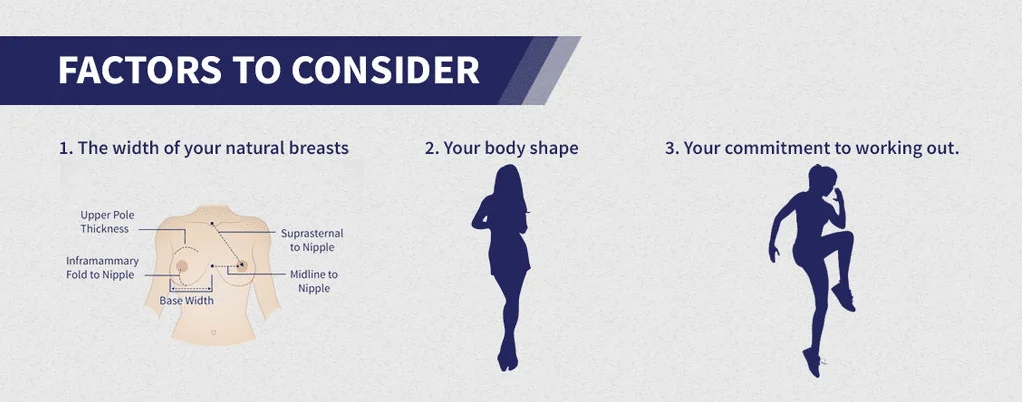
Breast implant size depends on a variety of factors. No one size fits all. However, a consultation with an experienced cosmetic surgeon can help with your decision. When choosing the size of your implant, here are some things to consider:
Start by viewing before and after photos online
Viewing Dr. Bernard Beldholm’s before-and-after breast implant gallery can give you an idea of what to expect with your own procedure.
Consider bringing a significant other or trusted friend to your consultation
This can also be a big help with your decision. Of course, don’t feel pressured to make a decision on the spot. And remember, the decision is ultimately yours.
Consider your lifestyle
As you try on the sizers, don’t just think about how you will look in a swimsuit or low-cut top. Consider your physical activities as well as the kind of clothes you wear every day. After all, this is going to be a decision with long-lasting results. You want to avoid re-operation just because you found out after surgery that a certain size is not practical for your lifestyle and preferences.
Communicate your preferred size at the consultation
When you tell the surgeon exactly what your expectations are, you are more likely to be happy with the results. Cosmetic surgeons can give you advice and use their aesthetic judgment, but they are not mind readers.
Planning for surgery
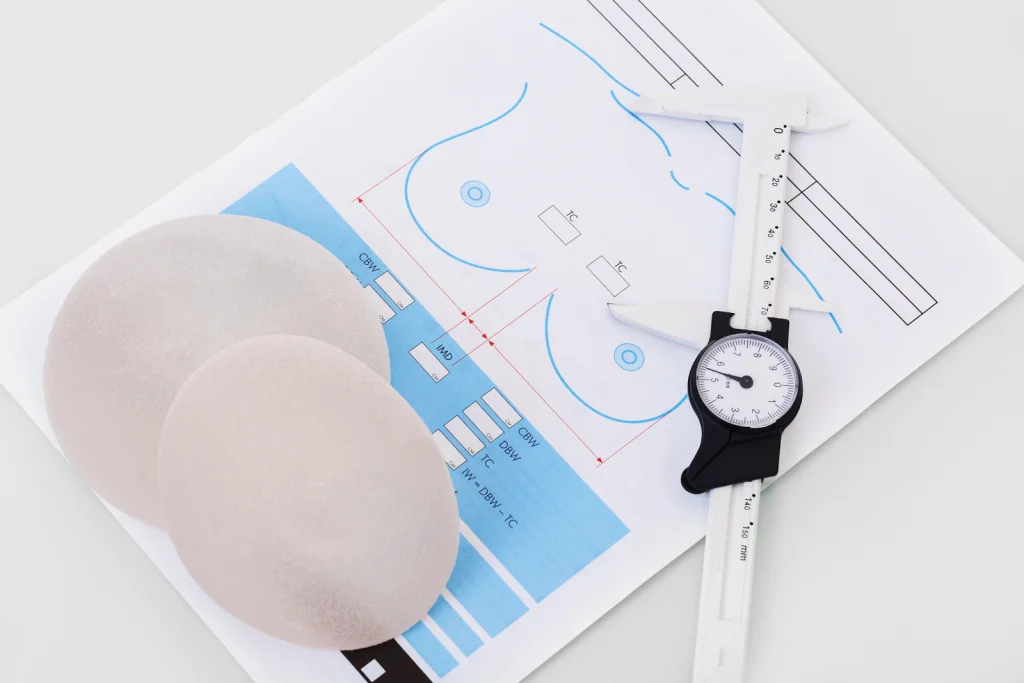
After you choose a surgeon and decide to move forward with breast implant surgery, there are some steps to consider.
Paying for the procedure
The cost of breast augmentation surgery varies from surgeon to surgeon. In Australia, the cost of this procedure ranges anywhere from $8,000 to $15,000. Be wary of surgeons who charge much less. Remember the old saying, “you get what you pay for.” Cheap prices often come with increased risks or could be a sign that the surgeon is inexperienced.
Because this procedure is often cosmetic in nature, Medicare will not cover the costs.
If there is a medical reason for the surgery, such as breast reconstruction following mastectomy, Medicare will cover some of the cost. Another example is breast augmentation for asymmetrical breasts. A Medicare item number is available for this type of reconstruction surgery, too, but it is limited to surgery that is performed on one breast only.
Depending on the policy you have, a private insurance fund may cover some of the costs such as hospital fees, anesthesia, etc. However, medical expenses not covered by your plan are your responsibility to pay. That’s why it’s important to contact your insurance provider if you have questions about what the policy will or won’t pay. After all, you don’t want there to be any surprises when the bill arrives.
To learn more about our prices for breast implant surgery, click here.
Get medical clearance to proceed with surgery
Prior to having the procedure, your surgeon may ask you to:
Get a blood test
Before breast augmentation surgery, your surgeon may check your complete blood count (CBC). The complete blood count is a common screening test that can determine if you are anemic, have an infection or have problems with blood clotting. This can determine how well you will heal following surgery.
Purchase recovery supplies
You’ll need to prepare for the recovery process long before you go under the knife. Your surgeon may encourage you to buy items like antibacterial soap or ice packs to help ease bruising and swelling.
Stop smoking
It’s no secret that smoking is bad for you. Nicotine in cigarettes and vape products also interferes with the healing process after surgery. If you are a smoker, consider talking to your surgeon about treatments to help you quit. Ideally, quitting smoking 6 months before surgery is preferred. However, you must be nicotine-free for at least 6-8 weeks prior to surgery day.
Avoid aspirin and certain anti-inflammatory drugs after surgery
Some over-the-counter medications as well as certain ones prescribed by doctors can increase your risk of excessive bleeding. Make a point to discuss with your surgeon what medications you can and can’t take before and after surgery. Vitamin E supplements can also increase bleeding risks.
Breast augmentation risks & complications
Risks and complications of breast implants include all those seen in most surgeries: infection, bleeding, poor scars, unsatisfactory size and/or shape of the breasts, loss of feeling in the nipple/areola area, and asymmetry.
Numbness, swelling and scarring
Partial numbness is common in the breasts following augmentation, especially around the nipple for patients who had implants inserted through the nipple. However, this typically will only last about three months.
Breast implant scars will remain for about six months and then start to fade over time. It can take up to 1-2 years for breast implant scars to fade.
Swelling takes a few weeks to months to dissipate. As swelling goes down, the breasts will settle into the final position. Breasts typically start up high on the chest and feel firm. They will soften and drop over time. This is also known as breast implant “fluffing”, or “drop and fluff”. This process can take 3-6 months, longer in patients who had small breasts or firm, ** skin to start.
The final results are usually visible 8-12-months after surgery.
Ruptured implants
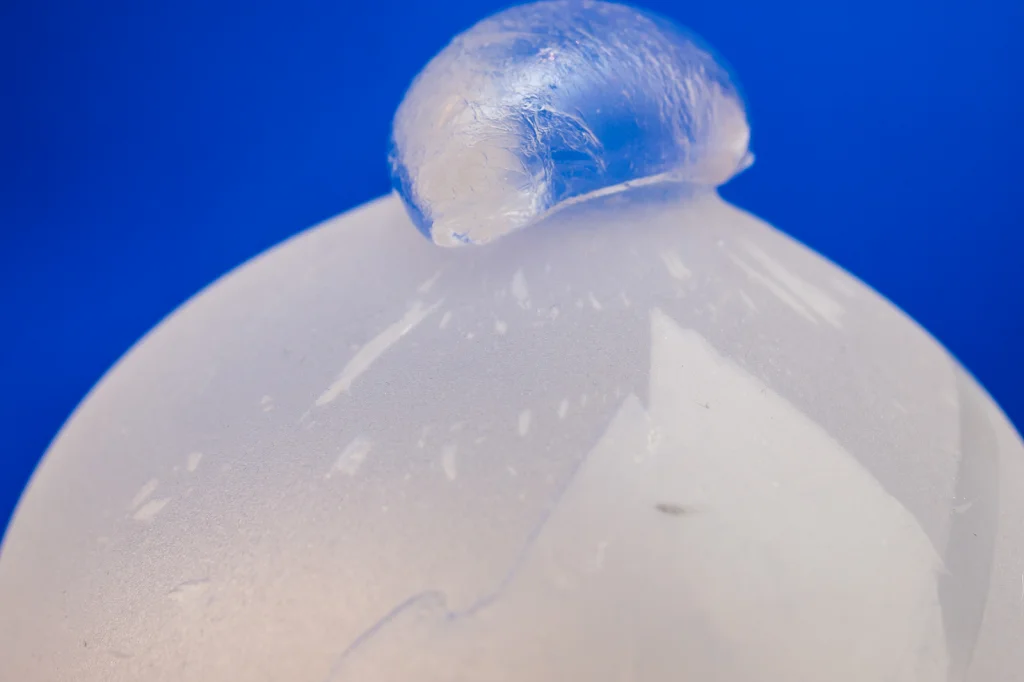
Breast implant rupture sometimes happens. If saline implants burst, the implant ** deflates as the saline filling empties ** into the body. Saline is just salt water, and the kind in saline implants is sterile. The condition is not dangerous, but the breast will appear deflated and can be corrected with breast revision surgery.
Silicone implants have a thicker gel that leaks very slowly. Sometimes it takes years to see that silicone implants ruptured. Regular breast imaging every two years after surgery can catch leaks early on, reducing your risk of hardening and other related problems. Breast implant removal and replacing the implants with new ones is recommended. You can simply remove breast implants and not replace them, if you wish.
Visit this page to learn all about breast implant rupture.
Breast implant cancer risk
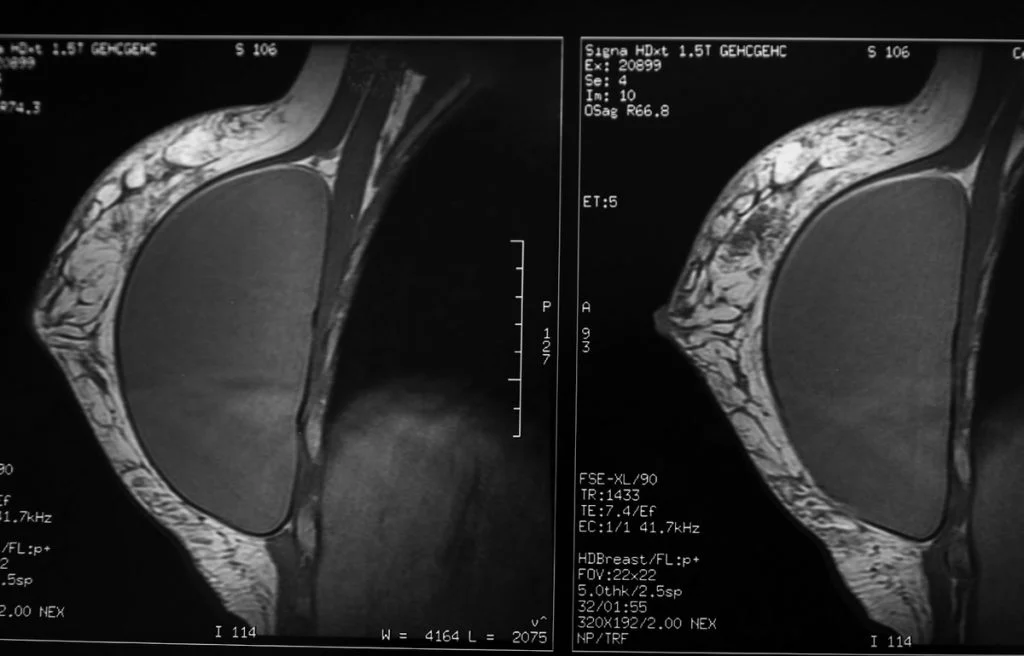
Some women considering breast augmentation surgery may hesitate to go through with the procedure out of fear of an increased risk for breast cancer. However, there is good news. According to recent studies, neither saline nor silicone implants appear to increase a woman’s breast cancer risk.
You may have seen media reports suggesting that breast implants used in breast reconstruction may be linked to a very rare type of lymphoma called anaplastic large cell lymphoma. According to Breast Cancer Network Australia, this is an ** rare cancer, affecting only 170 women worldwide to date.
Most health experts and organizations do not recommend special care for women with breast implants. However, if you have breast implants and feel any pain around the implants or have other problems, see your healthcare provider.
Anaplastic large cell lymphoma from breast implants
As mentioned above, the risk for developing cancer following breast augmentation surgery is extremely rare. However, 46 known cases of Anaplastic Large Cell Lymphoma (ALCL) have been diagnosed in Australian patients since 2015.
Recent research has shown that a cancer diagnosis is more common with patients with textured implants than smooth implants.
Deaths are also rare, but have occurred.
Breastfeeding after breast augmentation
For women who are considering breast augmentation surgery and want children down the road, the ability to breastfeed is often a concern. The location, orientation and extent of the incision determines how much milk production will be affected.
Your chances of breastfeeding ** if your milk duct system is intact. Implants are typically placed behind the milk glands or positioned under the muscle. Incisions made under the fold of the breast or through the armpit are less likely to cause difficulty. Incisions made around the areola can.
Nerves are vital to breastfeeding since they trigger the brain to release prolactin and oxytocin, two hormones that affect milk production. If the nerves around the areola were cut or damaged during surgery, you have an increased risk for low milk production. You won’t know the full extent of nerve damage, if any, until you try to breastfeed.
Along with the ability to breastfeed, it’s not uncommon for women to worry if the material their implants are made from will harm their babies. According to a number of studies, there is no evidence that silicone or saline implants can leak into breast milk.
Book your appointment online now
Getting breast augmentation surgery

The big day has arrived. Congratulations! First, you will meet with the surgeon and anesthesiologist. You’ll have a chance to ask any final questions. It’s normal to be nervous and excited on surgery day.
When you are finally on the operating table under anesthesia, your surgeon will make a single cut (incision) in one of three places in order to insert the breast implants:
- Under your arm
- In the crease under your breast
- Around your nipple
After making the appropriate cuts, your surgeon will separate your breast tissue from the muscles and connective tissue of your chest. By doing this, a pocket forms either under the muscle or over the muscle of the chest wall.
Silicone implants are already filled with silicone gel. They are simply placed in the breast pocket. Saline implants are inserted empty and then filled with sterile salt water once they’re in place. When the implant is in place, the incision will be closed with sutures and bandaged with skin adhesive and surgical tape.
Whether you decide to place your implants over or under the muscle is a decision you and your surgeon will make together. In general, sub muscular implants (under the muscle implants) **.
Under muscle implant placement benefits:
- Less risk for capsular contracture (hardening of the breast around the implant)
- Better implant coverage with less wrinkling and palpability
- Easier-to-read mammograms
- Better upper pole contours
Breast augmentation recovery & downtime
Breast implant recovery has no fixed timeline as each patient heals differently.
When can I drive after breast augmentation?
You will not be allowed to drive for the first 24 hours after surgery due to anesthesia.
You can begin driving when you feel you can use your arms and upper body sufficiently to turn the steering wheel and operate a vehicle **. That can be the next day after surgery, or a few days later.
How long do I have to take off work for breast augmentation?
If you have an office job or non-physical job, it is possible to return to work the day after surgery. However, most patients take at least 5 days off just to make recovery easier. Resting is important.
When can I exercise after breast implant surgery?
It’s a good idea to begin walking the day of surgery. Walking has many benefits. For example, it lowers your risk of blood clots after surgery. You should walk or a few minutes every few hours starting the same day as surgery.
Most patients can resume exercise 4-6 weeks after surgery. Listen to your body. It is normal to be a little sore, but if it hurts, stop.

Final thoughts
Women have different reasons for wanting breast augmentation, and that’s ** okay. Ultimately, breast augmentation is a personal choice that you must make for yourself.
If that seems like a daunting task, Dr. Bernard Beldholm’s team is here to help. We take pride in guiding patients through the process — before and after surgery. Our goal is to make sure our patients are totally ** with their decision to get implants.

